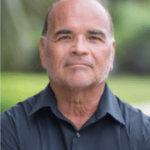Reproducing Reproducers: Creating a Legacy of Leadership Succession
If you are not creating and investing in the right system, you are putting your nonprofit’s long-term sustainability at risk.

“[T]he fruit tree yielding fruit after its kind, whose seed is in itself…” – Genesis 1.11
Nature teaches us that fruit is naturally reproduced through the seeds of more fruit within itself.
Those seeds continue to reproduce more fruit trees which produce more seeds—on and on the cycle of natural reproduction goes.
Let’s breakdown this natural reproducing process and examine the principles that must combine (or collaborate, if you will) for reproduction to take place:
- The seed within the fruit must be planted in fertile soil and combined with the other necessary elements of water and sun. Such combination is then cultivated and ultimately reproduces more fruit-yielding trees, which yield fruit after their kind, “whose seed is in itself.”
- The phenomenon of releasing the life in the seed—which must mix with the other needed elements of soil, water, and sun—is a mystery in itself. As it combines with the other needed elements, the seed must be selfless in the giving of itself or remain alone and unfruitful.
- Finally, although it only takes one seed to reproduce one fruit-yielding tree, there is no telling how much fruit each seed will yield via its fruit-yielding tree. Or, to put it another way: you can count the number of seeds in an apple, but you cannot count the number of apples in a seed.
What does all this have to do with reproducing leadership within a nonprofit? As it turns out, a lot.
The Seed Within Us Must Be Planted in Others
Those of us who have the privilege of being in authority and leadership positions are not in these positions for ourselves. We may be good leaders, great leaders, even highly effective leaders. We may be leaders with grand influence and throngs of followers who admire our wit, words, and wisdom. And while all those things have their place and worth, they can be mistaken (and too often are) for the end game of our purpose and thwart our ability to construct long-lasting legacies of fruitful leadership.
The environmental nature of reproduction is inherent in human nature as well. Yet, there is a difference: though inherent, it is not automatic.
We have witnessed leaders in positions of power and authority make decisions for their own good, their own personal glorification, and/or their own personal benefit, decisions that are not in the best interest of their followers or society in general. This is contrary to what we see in the normal fruit-bearing reproductive system in nature. And that is the difference between leaders with a mindset of producing followers that are fans versus the mindset of leaders reproducing followers who reproduce other leaders.
The Planted Seed Must Become Selfless
As nonprofit leaders, we are called to a higher path, a path that is line with the nature of reproduction. This passion within us seeks to reproduce others of like mind, heart, and spirit of service. This internal passion in turn will also reproduce leaders, who will reproduce other leaders, who will reproduce others. Thus, the life cycle of excellent leadership continues beyond the original leader.
This reproduction requires leaders with a certain mindset and attitude about authority and its purpose. It requires leaders with checked egos, a strength of humility, a servant mindset, and, in a word, selflessness. This selflessness freely gives, shares power, liberates, lifts others, and releases others to grow into their intended potential. Essentially, leadership must be selfless so that others may succeed.
The Power of One Seed to Produce Many
Reproducing reproducers solidifies the legacy of fruit-bearing leadership. The principles we learn from nature can be captured in our organizational systems, structures, and culture that provide the ongoing reproduction of reproducing leaders. This system of ongoing reproduction requires understanding its step-by-step cycle:
- We must find the fertile soil. The fertile soil refers to the hearts of those with a servant mindset and hunger to learn and grow. These are individuals—staff members—that demonstrate a coachable spirit, humility, loyalty, and a consistent willingness to invest time in developing others. They seek what is in the best interest of the organization, not what’s in it for them.
- We must model, teach, and guide, those we are developing. We cultivate their maturation as leaders by an investment of our time coaching them. This type of mentoring cannot be done from a distance but rather is up close and personal. It allows our mentees to witness how we handle success, adversity, diversity, and how we own up to our mistakes and shortcomings as leaders.
- We must create the systems that provide needed resources. These structures must allow autonomy, personal expression, decision making, innovation, and the creation of new methods of delivering services. Instead of judgment, we must provide support when mistakes are made through risk taking to ensure confidence and the learning process of leadership development.
- We must continually practice selflessness by listening to other perspectives. We must allow others to figure out solutions. Ultimately, we must make room for those we have cultivated to grow and succeed us, replace us, and continue to reproduce other reproducers.
In closing I leave you with the words of Akio Toyoda, President of Toyota Motor Corporation:
We want our DNA to be encoded in every leader and every team member at every level of the company. We expect greatness from all our people. We expect them to accept and conquer challenges that may seem overwhelming at first glance. The greatness of people comes out only when they are led by great leaders. We are all growing and learning, and we all need teachers and coaches to help guide us. We say at Toyota that every leader is a teacher developing the next generation of leaders. This is their most important job.
You might also like:
- How to Stop Managing Your Nonprofit and Start Leading
- When the Board Becomes the Problem: Reclaiming Power in Nonprofit Leadership
- Why Human-Centered AI Adoption Matters for Nonprofits
- The New Sheriff in Town: Tips for Successfully Leading a Nonprofit Team (that Someone Else Built)
- When the System Fails Quietly: What I’ve Learned from Sitting Between the Frontline and the Data
You made it to the end! Please share this article!
Let’s help other nonprofit leaders succeed! Consider sharing this article with your friends and colleagues via email or social media.
About the Author
Richard R. Ramos has overcome the obstacles of barrio youth gangs, drugs and violence, to devote his career to serving high-risk Latino youth & families. He is the Executive Director of the Latino Coalition for Community Leadership, a national nonprofit whose purpose is to find, fund, form, and feature nonprofits in marginalized communities meeting the needs of individuals and families. He is also founder of “Parents on a Mission” a parent leadership program adopted by school districts, nonprofits, various Departments of Corrections and the United States Agency for International Development (USAID) as part of their strategy for violence prevention in Guatemala.
Ramos has served as a Juvenile Hall instructor, at-risk counselor; a co-founding director of a gang intervention community coalition; director of a youth teen center and a founding director of the Interfaith Initiative of Santa Barbara County. He has received numerous awards including recognition by the White House, U.S. Congress, and California State Assembly. He has been inducted into the Morehouse College’s Martin Luther King, Jr. International Chapels Board.
Ramos has authored three books: “Got Gangs?”, “Gang Prevention and Schools,” and “From The Margins To The Mainstream – Preparing Latino Youth For Leadership In The 21st Century.”
Articles on Blue Avocado do not provide legal representation or legal advice and should not be used as a substitute for advice or legal counsel. Blue Avocado provides space for the nonprofit sector to express new ideas. The opinions and views expressed in this article are solely those of the authors. They do not purport to reflect or imply the opinions or views of Blue Avocado, its publisher, or affiliated organizations. Blue Avocado, its publisher, and affiliated organizations are not liable for website visitors’ use of the content on Blue Avocado nor for visitors’ decisions about using the Blue Avocado website.








We are currently the Finance Couple for a marriage ministry called Retrouvaille International. We are presently trying to reproduce ourselves as our three year term is over at the end of this year. This article has been very enlightening on what to do.
The bigger question for our ministry, however, is to maintain each of our over 120 Community (usually a Board of 10-20 members) so that each Community can continue to offer Weekends to couples who are in a troubled marriage, small depth or deep depth. We would love to present a webinar to our Community leaders to explore the suggestions in this article, maybe even directed by its author, Richard Ramos.
Is this a possibility and who would we talk with?